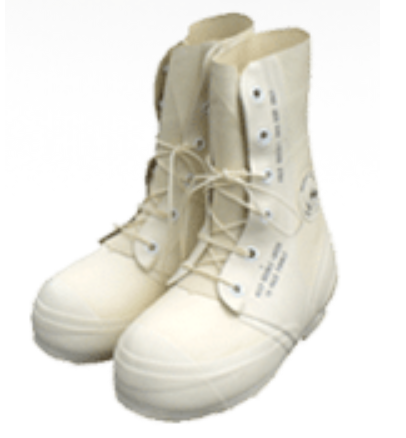What are the most common break downs?
By far the most common are suspension problems. The extreme cold makes everything brittle; combine that with such excessive abuse and additional gear weight over an extended period, and parts begin to fail. Next to that may be good old-fashioned running out of fuel. Most riders carry an additional 3 to 6 gallons beyond the OEM fuel load.
What is the most frequently asked question?
It is without a doubt, “who grooms the trail?” This shows the common lack of understanding. Only the entrance to the race is groomed. Sometimes there is no trail. Sometimes the race course has been changed to avoid open water on some of the warmer years.
Has an all-women’s team ever finished the race?
Yes. In February, 2001, the first women's team, Jackie Page and Missy McClurg finished the Pro-Class race placing 15th in 60 hours and 23 minutes (1,971 miles). In 2023, the second all-women team finished the Pro-Class race, PLUS the inclusion of the Red Dog Loop. Hillarie Gossett and Ashley Wood placed 14th in 85 hours and 7 minutes (2,503 miles).
How many people have died during the Iron Dog?
Although the combination of speed, terrain and extreme conditions can be a dangerous mix, no death has so far been directly attributed to the race. Injuries such as sprained or broken ribs ankles and wrists have happened with frostbite and dehydration are the most common.
What’s the difference between a Rookie and a Veteran?
Unlike many other sports and races, the Iron Dog maintains a long-standing tradition of giving "Rookie" status to all racers who have never FINISHED the Pro Class race. Veteran status is only given to a person who has successfully completed the Pro Class race by crossing the finish line.
How long is the distance between check points?
Usually check points are less than 100 miles apart, though the longest is a 120-mile spread.
What services are available at the checkpoints?
Fuel. Everything else varies. Some checkpoints have been no more than a tent.
What type of racing fuel is used?
Racing fuel is not used. It is automotive fuel that is flown in and air dropped at the several locations. In some remote locations, the fuel sits for months before being used. It can become water contaminated or lose most of its octane. The fuel is provided to the racers by Iron Dog but at a great expense often times more than $10 a gallon.
What are the common mistakes that new racers make?
Novice racers most often over pack and under drink. Dehydration is the most common ailment. The body loses a tremendous amount of water when you’re active–no matter the temperature and the Iron Dog racers are more active than you can imagine.
What do racers pack?
Racers are required to pack a tent or a bivy sack, 5 pounds of tools, a first-aid kit, and must also have studded tracks and an extreme cold-rated sleeping bag. It has become popular for racers to vacuum package their sleeping bags into bricks to save space. Read the example checklist and current rules for detailed information.
How do racers keep drinking water from freezing?
Water is carried on the racers back underneath the insulating layer. Also an electrolyte drink is often used. Besides warding off dehydration the freezing point is slightly below that of water. Some riders have their sleds outfitted with a small water tank that relies on the heat from the sled exhaust to keep it in liquid form.
What is the coldest temperature racers face?
Some racers have recorded temps as low as -57 degrees Fahrenheit. Although most racers claim it can get much colder in the river basins and valleys. The wind chill factor at the speeds the racers travel are often in the subzero triple digit range, and often times are quite literally off the charts. Sled seats can even become brittle at these temperatures.
How does a racer dress to prepare against such extreme temperatures?
Well, we have to toot our own horn here. A good percentage of racers rely on Klim Technical Riding Gear. It is this kind of extreme use that our layering system (base layers, mid layers and Gore-Tex outer layers) was built for. The human body really produces a tremendous amount of heat, especially during high activity levels. Iron Dog riders worry about getting to hot as much as getting to cold. Having pit zips and back vents and being able to remove layers make the Klim layering system superior to any insulated parka and bib. Riders also wear Tek Vests as well as kidney belts and other protective gear, and as mentioned before some sort of a hydration system. It seems each racer has their own little tweak in the way they layer or prepare that will make the winning difference.
What about gloves?
There are as many opinions on the subject of gloves as there are racers. However, there are a couple common threads. Seams!! After nearly 2,000 miles, any misplaced seam will cause blisters. The palms and contact areas should be free of any seams. Waterproof gloves are a must. Leave your ‘water resistant’ or DWR gloves at home. Only a durable full membrane liner (GORE-TEX®) will do. Most racers prefer light insulation on the palms and heavy insulation on the back of the hand. The Klim Togwotee fits the bill perfectly.
What are the more challenging parts of the trail?
Again this is an area where most people have misconceptions about the trail. Racers will encounter a very diverse geography, wildly varying snow conditions and extreme temperatures. There are large open plains with little or no snow requiring racers to be careful not to overheat the sled and melt the hifax. There is a 5-mile stretch known as the “Tunnel,” where the trees are so close that a racer might only be able to see 10 feet ahead at any given time. The trick is to keep both skis on the same side of every tree. It sounds simple enough but countless A-arms have been broken here. Some areas the snow is extremely deep and the single track trail turns into what looks more like a snowcross track. In other places there are frozen waterfalls that must be climbed. Without studs it would be impossible, with studs it can still be challenging. There are plenty of places were some good side hilling skills are required.
What are some of the more unknown facts about the Iron Dog?
At night, you cannot get out of your bivy sack to use the restroom. You will risk lowering your core body temperature to a dangerous point. And holding your bladder can actually make you colder. What is the answer? A military invented chemical that converts urine liquid into a gel.
How much of a factor is inclement weather?
Huge! Racers have reported that storms hit you like a wall without warning, giving you no chance to find shelter and completely removing any visibility. It has been reported that eight men have failed to be able to set up one two-man tent in such storms; this why bivy sacks are so often used. Sleds can be so packed with snow and ice by strong winds during the night that it will fill every cavity under the hood. When the hood is opened in the morning the snow will have taken on the shape of the underside of the hood. The ice has to be chipped out of the engine compartment to be able to steer or even to get air to the engine. Even after that one racer reported it taking 27 pulls to start a fuel injected Arctic Cat. No disrespect to AC. This is just par for the course under these conditions.
Is that tape on racers’ faces?
Yes, It is strategically placed Duct tape or surgical tape. It is there to protect the skin from any gap between the goggle and the Helmet. Frostbite will damage any unprotected skin almost instantly.
I have noticed four strokes in the race, will they be a continuing trend?
Racers that cite the decision to use four strokes are focused on their reliability and fuel economy. Unfortunately for them, the most common breakdowns we see are suspension related, the rough trail and cold temperatures take a toll on the increased weight of the four strokes. As of right now two strokes still dominate the Iron Dog.
Is there intense rivalry between racers?
While it is a very competitive race and some elements and strategies are very guarded and secretive, Iron Dog racers realize they are competing against the elements as much as they are competing against each other. Actually the veteran racers are very supportive and open to new teams. Perhaps more so than any other race.
What are the funny boots most Iron Dog racers wear?
Bunny Boots
They are called ‘Bunny Boots’ due to the fact that they are big and white, similar to the hind legs of a snowshoe rabbit. Think of two pairs of rubber boots, sealed one inside of the other with insulation between the layers. They can be easily recognized by the valve (similar to Schrader valve) used to equalize pressure. They are not comfortable, compact, stylish, supportive or even durable. The only thing they have going for them is since the insulation is sealed inside it cannot get wet, even from water pouring down the inside of the boot. Dry insulation means warm feet. So it is really more of a safety factor and also keeps the racer from packing multiple sets of boots or liners. However they don’t breathe so your feet will always be wet, they often get stuck in the foot wells because they are so bulky and they don’t stand up to long-term use. Racers have been known to coat their boots in petroleum jelly to prevent them from binding in the foot wells!







